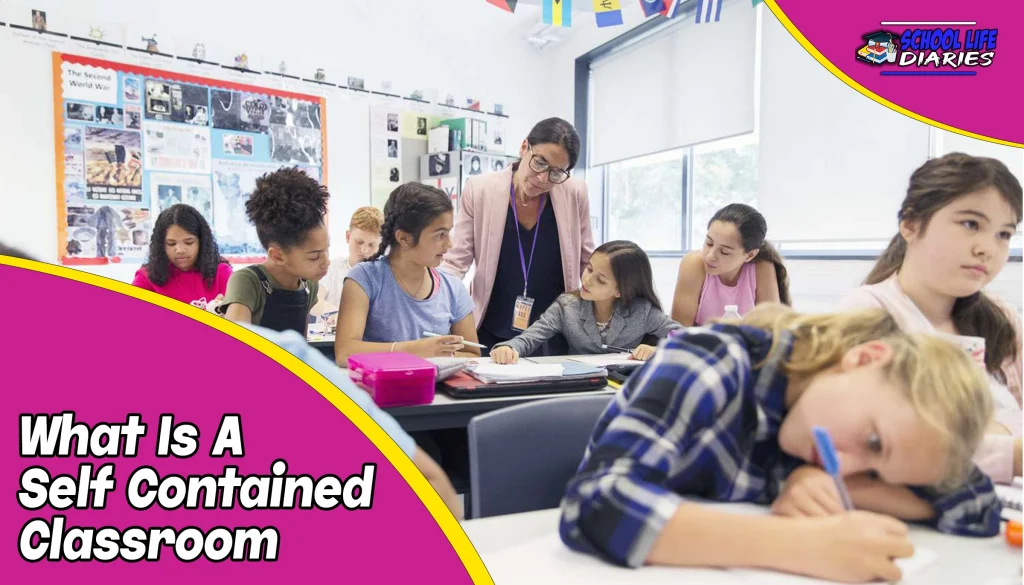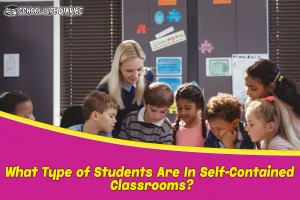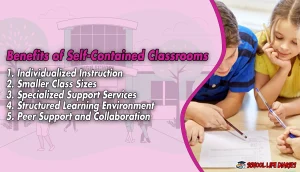In the realm of education, classrooms come in various forms to accommodate the diverse needs of students. One such type is a self-contained classroom. A self-contained classroom refers to a specialized educational setting where students with specific learning needs or disabilities receive instruction tailored to their individual requirements.
This blog post will explore the purpose and benefits of self-contained classrooms, as well as the type of students who are typically placed in these settings. We will also delve into the historical background of self-contained classrooms and examine both the negative effects and the positive aspects they can have on students’ education.
Which Students Should Be Placed in Self-Contained Classrooms?
Self-contained classrooms are designed to cater to the educational needs of students who require more individualized instruction and support. Typically, these classrooms are reserved for students with disabilities or learning challenges that make it difficult for them to thrive in a mainstream classroom environment.
Students with conditions such as autism spectrum disorder, intellectual disabilities, emotional and behavioral disorders, specific learning disabilities, or sensory impairments might benefit from a self-contained classroom.
The Purpose of Self-Contained Classrooms
The primary purpose of self-contained classrooms is to provide a highly structured and specialized learning environment for students who require additional support. These classrooms aim to address the unique needs of each student by offering individualized instruction, accommodations, and modifications to the curriculum. The goal is to help students make progress in their academic, social, emotional, and behavioral development.
What Type of Students Are In Self-Contained Classrooms?
The students placed in self-contained classrooms vary in their needs and challenges. Some students may have significant cognitive disabilities that require a different pace and approach to learning. Others may have behavioral or emotional challenges that require a structured and supportive environment.
Students with autism spectrum disorder, for example, may benefit from the consistent routines and specialized strategies used in self-contained classrooms.
When Were Self-Contained Classrooms Established?
Self-contained classrooms have been a part of the educational landscape for several decades. The exact timeline of their establishment may vary across different regions and educational systems. However, the concept of providing specialized education for students with disabilities gained prominence in the mid-20th century with the advent of special education programs.
As educational practices evolved and legislation such as the Individuals with Disabilities Education Act (IDEA) was enacted, self-contained classrooms became more widely recognized as a viable option for certain students.
Negative Effects of A Self-Contained Classroom
While self-contained classrooms offer specific benefits, it is important to acknowledge and address their potential negative effects. It is crucial to evaluate the impact of these classrooms on students to ensure their educational experiences are well-rounded and inclusive. Here are some of the negative effects associated with self-contained classrooms:
1. Limited Social Interaction:
Students in self-contained classrooms may have fewer opportunities for social interaction with peers who are not in the same specialized setting. This limited exposure to diverse social interactions can hinder the development of social skills and the ability to navigate various social contexts.
2. Stigmatization and Labeling:
Placing students in separate classrooms can inadvertently lead to stigmatization and labeling. Being separated from mainstream classrooms might reinforce the notion that students in self-contained classrooms are “different” or have limitations, potentially impacting their self-esteem and overall social integration.
3. Lack of Inclusion and Diversity:
The isolation of students in self-contained classrooms can contribute to a lack of diversity and inclusion within the broader school community. Inclusive education, where students with diverse abilities learn together, fosters understanding, empathy, and a sense of community.
4. Reduced Academic Challenges:
In some cases, students in self-contained classrooms may not be exposed to the same academic challenges and opportunities as their peers in mainstream classrooms. This could limit their academic growth and potential, hindering their ability to reach their fullest potential.
5. Professional Development for Teachers:
Teachers in self-contained classrooms require specialized training and ongoing professional development to effectively address the unique needs of their students. The availability and quality of such training can impact the quality of education provided in self-contained classrooms.
Related Article: Conflicts In Schools Examples: Causes And Strategies
Benefits of Self-Contained Classrooms
While acknowledging the potential negative effects, it is essential to recognize the benefits that self-contained classrooms can offer to students with specific learning needs. Here are some of the advantages associated with self-contained classrooms:
1. Individualized Instruction:
Self-contained classrooms allow for tailored instruction that caters to the unique learning needs of each student. Teachers can adapt teaching strategies, materials, and pacing to provide targeted support and maximize student growth.
2. Smaller Class Sizes:
With fewer students in a self-contained classroom, teachers can provide more individual attention, facilitating a more personalized learning experience. Smaller class sizes can also foster stronger relationships between teachers and students, leading to increased engagement and support.
3. Specialized Support Services:
Self-contained classrooms often provide access to specialized support services such as speech therapy, occupational therapy, or counseling. These services can address students’ specific needs and help them overcome challenges that may impede their learning progress.
4. Structured Learning Environment:
Students in self-contained classrooms often benefit from a structured and predictable learning environment. Consistent routines, clear expectations, and visual supports can help students feel secure and better able to focus on their academic and social development.
5. Peer Support and Collaboration:
While self-contained classrooms separate students from mainstream settings, they still offer opportunities for peer support and collaboration. Students within the classroom can learn from and support each other, fostering a sense of community and belonging.
Conclusion:
Self-contained classrooms serve an important purpose in providing specialized education and support for students with specific learning needs or disabilities. They offer individualized instruction, smaller class sizes, and specialized services to address students’ unique challenges.
However, it is crucial to consider the potential negative effects, such as limited social interaction and reduced academic challenges. Education systems should strive to strike a balance between providing specialized support and fostering inclusion and diversity within the broader school community.
By continuously evaluating and refining educational practices, we can create an inclusive and supportive environment where all students can thrive and reach their full potential.








